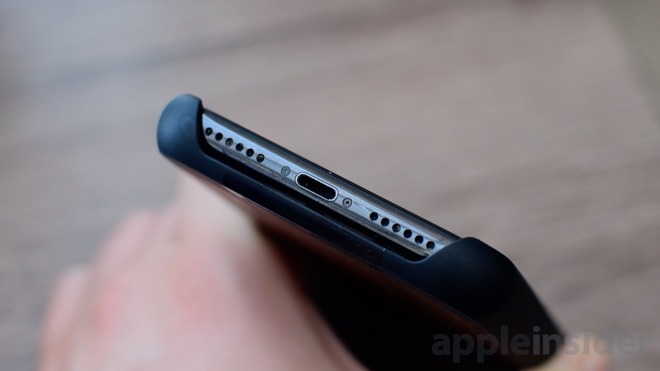Tucked away within the latest iOS 11.4.1 update, Apple included a new security feature that has been making headlines -- USB Restricted Mode. AppleInsider walks you through the new feature, how it works, and discusses if it really is that secure.
works like this -- one hour after iPhone, iPad, or iPod Touch was last locked, it will basically disable the Lightning port. Making it only usable for charging. If something is plugged into the Lightning port after USB Restricted mode has been enabled, it will not function unless the device is unlocked again.

Apple highlights how this is intended to help prevent unauthorized access to your data by disallowing access when you haven't recently used it. While not necessarily the primary target, this includes preventing devices like the GreyKey box used by law enforcement to brute force your passcode. Any vulnerability used by law enforcement can be exploited by criminals, which is why Apple has been so steadfast in its priority to lock down your data.
How to enable it
After installing iOS 11.4.1 on your device, USB Restricted mode is automatically enabled by default.

To find the toggle yourself, open the Settings app on your device. Find Face ID & Passcode (or Touch ID & Passcode depending on your model). Enter your passcode, and scroll to the bottom of the page to find the USB Accessories toggle under "Allow access when locked".
When enabled, this toggle should be off and to the left. This means that USB accessories do not have access when your phone is locked.
Now, one hour after it was last locked, the Lightning port will become charge-only.
There is another useful way to turn on USB Restricted mode quicker if ever needed, which is by using Emergency SOS.
Emergency SOS allows you to call emergency services with five quick presses of the side button. When this happens, Face/Touch ID is disabled, and USB Restricted mode is enabled.
USB accessories
There are many types of USB accessories -- card readers, microphones, batteries, headphones, and more. As a byproduct of USB Restricted mode, some of these may require your phone to be unlocked before they can be used as intended or even used to charge.
Some devices can charge your phone while they are being used, but after USB Restricted mode kicks in, may require you to unlock your device before they are able to charge.
Apple's support page says "If you don't first unlock your password-protected iOS device-- or you haven't unlocked and connected it to a USB accessory within the past hour-- your iOS device won't communicate with the accessory or computer, and in some cases, it might not charge. You might also see an alert asking you to unlock your device to use accessories."
How secure is it?
USB Restricted modeis clearly more secure than before, though there are certainly going to be vulnerabilities.
Soon after iOS 11.4.1 was released, security researchers were already looking for ways to bypass this latest security measure.
They seem to have been partially successful as well, noting that some accessories, such as Apple's USB 3 adapter will unintentionally extend the one hour window. GrayShift, maker of the GreyKey box, also claims to have already defeated USB Restricted mode, though it remains to be seen how they've managed this.
We will have to wait to see how Apple responds, and in what ways USB Restricted mode may change.
